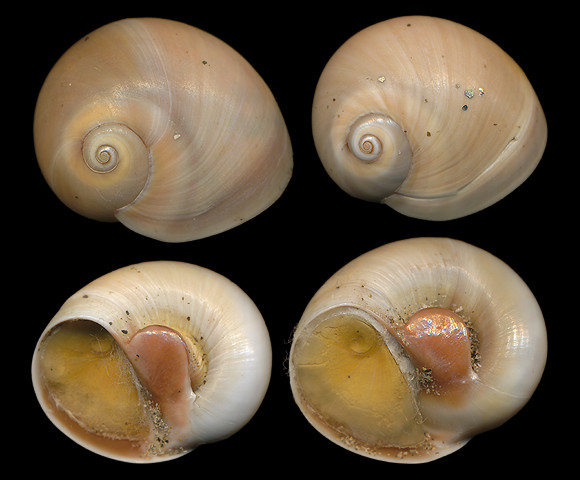
Predator in fine sand, at infralittoral depths.
A synonym is Natica olla de Serres, 1829.
« This shell is very smooth, translucent, plain, shiny, flesh-coloured, variegated with yellow and bluish. The umbilicus is violet, the operculum carlilaginous, glossy, very thin, amber-coloured, surrounded by a silver band. » – A. Risso: Histoire naturelle des principales productions de l’Europe méridionale… vol. IV, Paris 1826, p.150.
Pair collected near the entrance of Ayrolles lagoon, Gruissan, Occitania, S. France. 29-32mm.
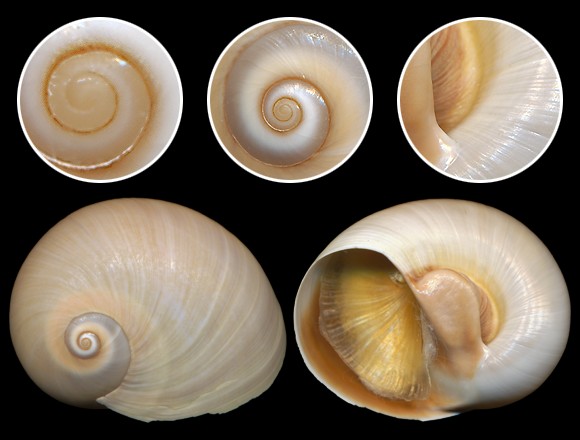
« The foot is very ample, the belly white above, blackish at the end; it contains in june a quantity of small yellow eggs. » – Ibid. Calambrone beach, Livorno, Toscana, W. Italy. 34,5mm.
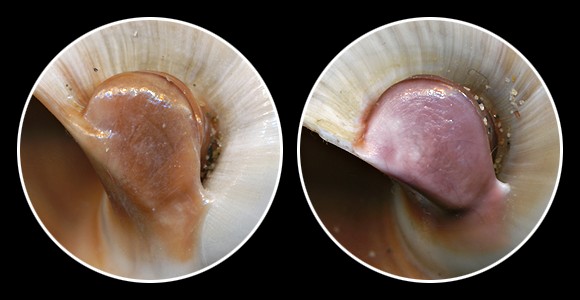
Rochelongue, Cap d’Agde, S. France.
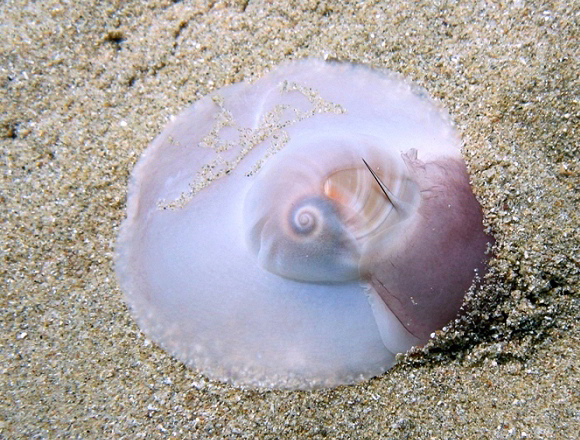
Kato Koufonisi, Cyclades, S. Ægean. Original picture provided by R. Pillon for WoRMS – (CC BY-NC-SA). The animal’s foot sprawls substantially far from the shell. « Propodium and mesopodium completely white, almost entirely covering the shell, includin spire… » – Hülsken & al.: “The Naticidae of Giglio Island”, Zootaxa 1770, Auckland 2008, p.35.
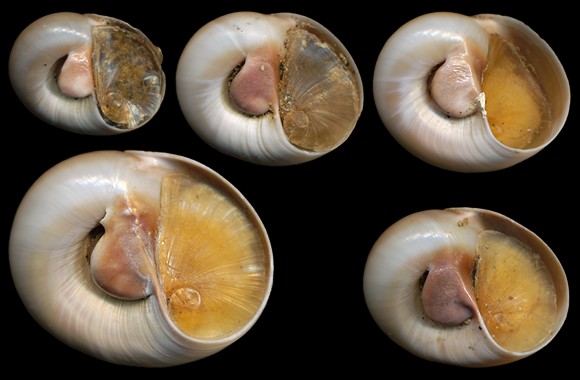
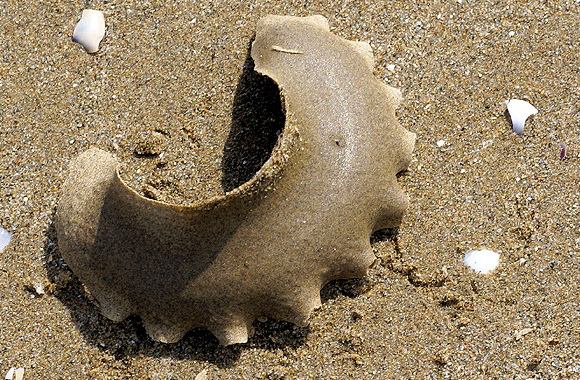
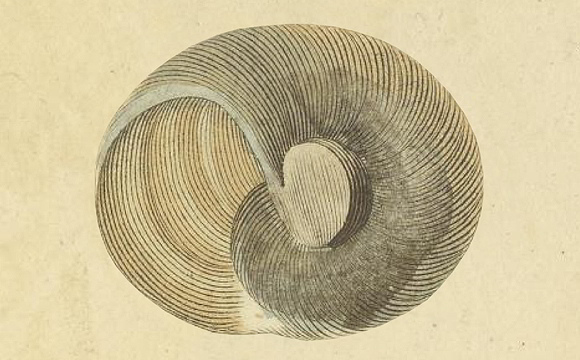
The umbilical callus is well highlighted.
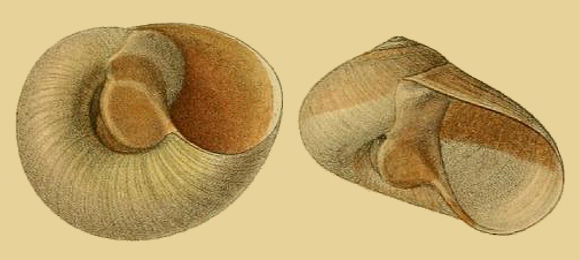

– (CC BY-NC) –
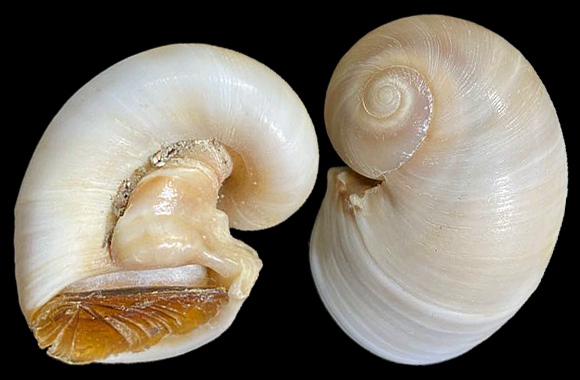
– (CC BY-NC-SA) –